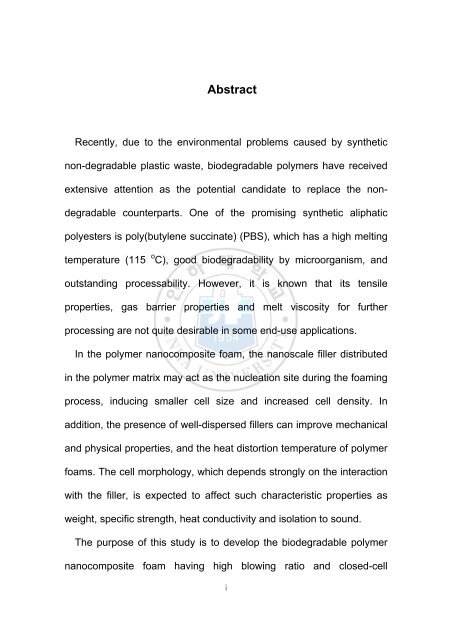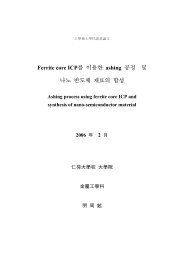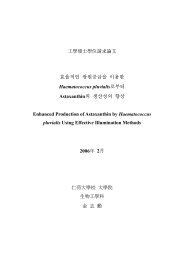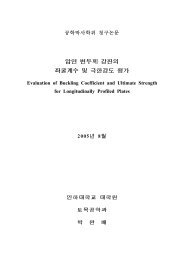저작자표시-비영리-변경금지 2.0 대한민국 이용자는 아래의 조건을 ...
저작자표시-비영리-변경금지 2.0 대한민국 이용자는 아래의 조건을 ...
저작자표시-비영리-변경금지 2.0 대한민국 이용자는 아래의 조건을 ...
Create successful ePaper yourself
Turn your PDF publications into a flip-book with our unique Google optimized e-Paper software.
Abstract<br />
Recently, due to the environmental problems caused by synthetic<br />
non-degradable plastic waste, biodegradable polymers have received<br />
extensive attention as the potential candidate to replace the non-<br />
degradable counterparts. One of the promising synthetic aliphatic<br />
polyesters is poly(butylene succinate) (PBS), which has a high melting<br />
temperature (115 o C), good biodegradability by microorganism, and<br />
outstanding processability. However, it is known that its tensile<br />
properties, gas barrier properties and melt viscosity for further<br />
processing are not quite desirable in some end-use applications.<br />
In the polymer nanocomposite foam, the nanoscale filler distributed<br />
in the polymer matrix may act as the nucleation site during the foaming<br />
process, inducing smaller cell size and increased cell density. In<br />
addition, the presence of well-dispersed fillers can improve mechanical<br />
and physical properties, and the heat distortion temperature of polymer<br />
foams. The cell morphology, which depends strongly on the interaction<br />
with the filler, is expected to affect such characteristic properties as<br />
weight, specific strength, heat conductivity and isolation to sound.<br />
The purpose of this study is to develop the biodegradable polymer<br />
nanocomposite foam having high blowing ratio and closed-cell<br />
i







